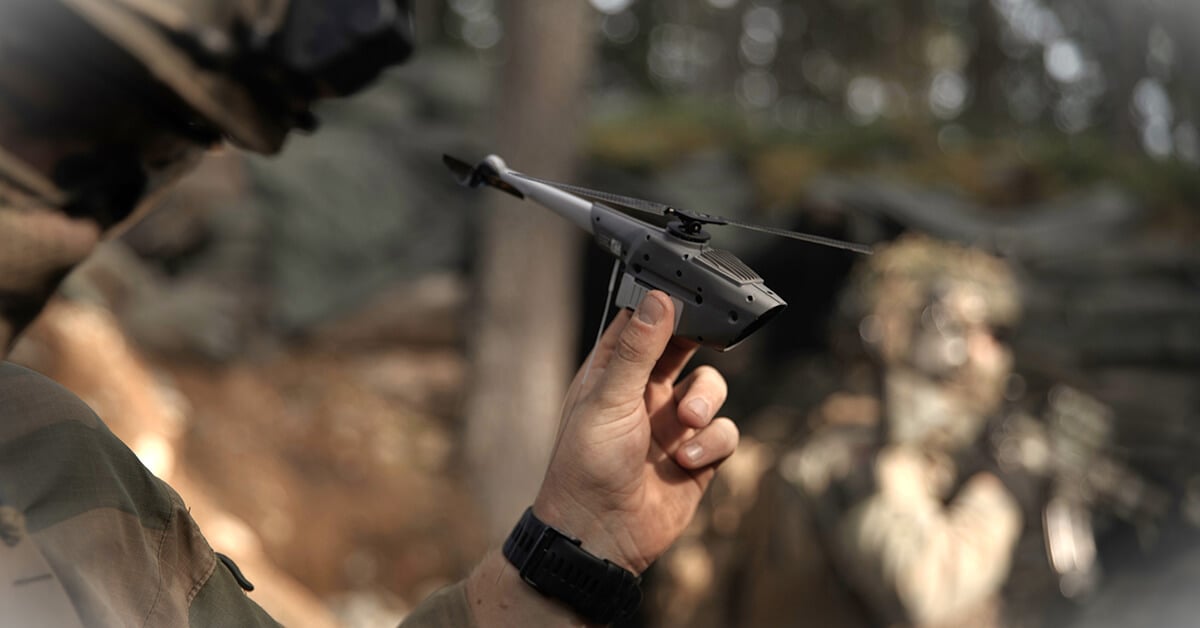
In the far future, a marine prepares to use a smart grenade. Pull the pin and throw. The grenade deploys wings and activates a camera providing video to the controller. The grenade flies down a tunnel, turning several times, then explodes in the face of the enemy. While marines today do not have a capability equal to this, it is only a matter of time before they do.
Unmanned air vehicles (UAVs) that once were transported by a small truck can now be carried in the pocket of a soldier. The most well-known “pocket drone” is the Black Hornet series, also called a Personal Reconnaissance System (PRS), from Teledyne FLIR.
According to the company, the Black Hornet augment’s the surveillance and reconnaissance capabilities of squads and small units. These small drones can provide information on who might be in a building that soldiers fighting in Aachen (September-October 1944) could only dream about.
Thousands of these nano-drones have been produced and delivered to more than 40 armed forces, including the United States, the United Kingdom, Norway, France, Germany, Denmark, Algeria, Ireland, Australia, the Netherlands, Poland, New Zealand, India, Turkey, South Africa, Ukraine and Morocco
In a trench, somewhere in the future, a marine is crouched, holding a small grenade. Before throwing, the marine reaches in a pouch and grabs a handful of nano-drones, each the size of a house fly. Once thrown, this swarm rapidly deploys providing a wide area view to the marine’s wrist mounted video screen. The enemy is quickly located and the grenade thrown. The resulting micro-nuclear obliterates the target. For now, this is farfetched, but U.S. Marines in the Belleau Wood (June 1918) would not have believed someone could have a helmet equipped with a radio either.
For more than 35 years, Larry has been involved in research and analytical work for various Forecast International projects. He has contributed to the Airborne Electronics Forecast and was chief editor on the World Aerospace Weekly newsletter. Larry was directly responsible for the creation of World Weapons Review, a biweekly industry market research publication specializing in weapon systems and related material. He was the creator of Unmanned Vehicles Forecast, launched to cover the growing market for civil and military drones, and was involved in the development of the Airborne Retrofit & Modernization Forecast service. He is currently responsible for the Missile Forecast and for FI's two Unmanned Vehicles Forecast services – Airborne Systems and Land & Sea Systems.




